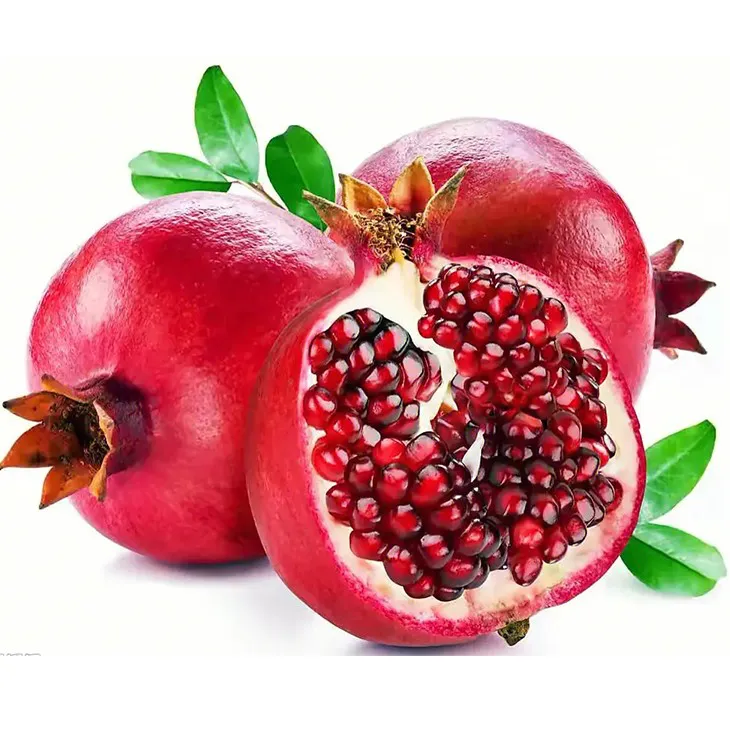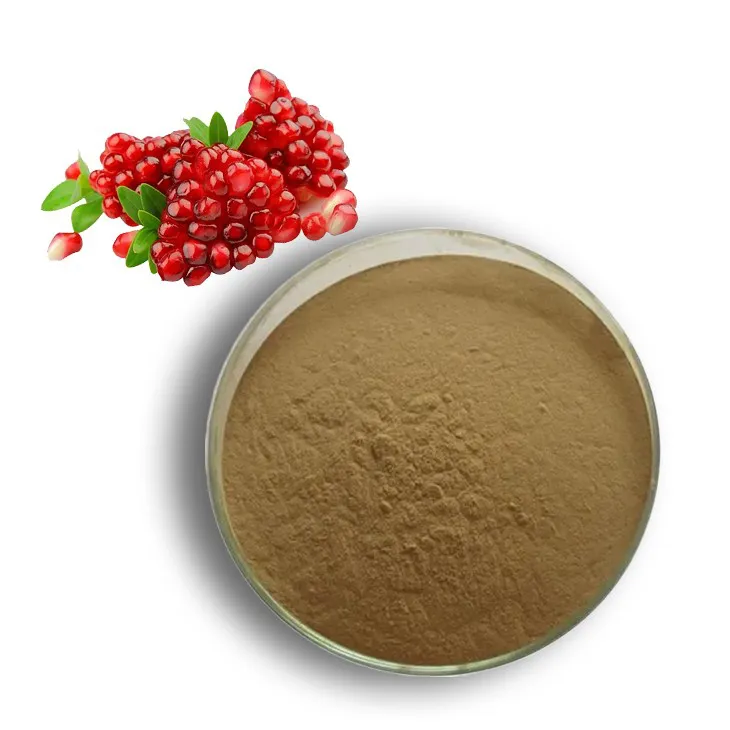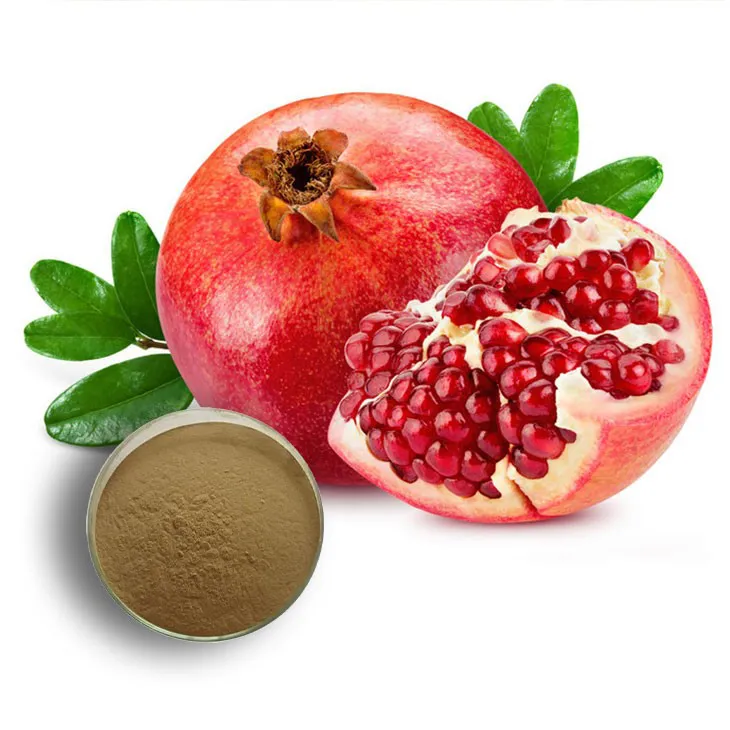- 0086-571-85302990
- sales@greenskybio.com
The process of extracting pomegranate ellagic acid from pomegranate extract.
2024-11-26

1. Introduction
Pomegranate has long been recognized for its potential health benefits, and one of the key compounds responsible for these benefits is punicalagin. Punicalagin is a large polyphenol compound that exhibits antioxidant, anti - inflammatory, and anti - cancer properties, among others. Extracting punicalagin from Pomegranate Extract is of great significance, both in scientific research for understanding its biological activities and in commercial applications for developing functional foods, nutraceuticals, and pharmaceuticals. This paper aims to comprehensively review the extraction techniques of punicalagin from Pomegranate Extract, including traditional and novel methods, as well as purification and analysis methods.

2. Traditional Solvent Extraction Methods
2.1. Principles and Procedures
The traditional solvent extraction method is based on the principle of solubility. Punicalagin is soluble in certain solvents, so by using an appropriate solvent, it can be separated from the Pomegranate Extract. The general procedure involves grinding the pomegranate peel or whole fruit into a fine powder, then adding a solvent such as ethanol, methanol, or acetone. The mixture is stirred or shaken for a certain period, usually several hours to overnight, to ensure sufficient contact between the solvent and the sample. After that, the mixture is filtered to obtain the extract containing punicalagin.
2.2. Advantages
- Simplicity: It is a relatively straightforward method that does not require complex equipment. Laboratories with basic facilities can easily carry out this extraction.
- Wide availability of solvents: Ethanol, methanol, and acetone are commonly available solvents in most laboratories, making it convenient to start the extraction process.
2.3. Limitations
- Low extraction efficiency: The traditional solvent extraction method may not be able to extract punicalagin completely. Some of the punicalagin may remain in the residue, resulting in a relatively low yield.
- Long extraction time: As mentioned above, the extraction usually takes several hours to overnight, which is time - consuming, especially when large - scale extraction is required.
- Solvent toxicity: Some solvents, such as methanol and acetone, are toxic. Although proper safety measures can be taken during the extraction process, the use of these solvents may still pose potential risks to human health and the environment.

3. Novel Extraction Technologies
3.1. Microwave - Assisted Extraction
Microwave - assisted extraction (MAE) is a relatively new and efficient extraction method. The principle behind MAE is that microwaves can heat the sample and solvent rapidly and uniformly. In the case of punicalagin extraction from pomegranate extract, the microwaves interact with the polar molecules in the solvent and the sample, causing rapid heating and increased mass transfer. The general procedure is to place the pomegranate powder and solvent in a microwave - transparent container, and then expose it to microwaves for a short period, usually a few minutes to tens of minutes. After that, the extract is obtained by filtration as in the traditional method.
3.2. Advantages
- High extraction efficiency: MAE can significantly improve the extraction yield of punicalagin compared to traditional solvent extraction. The rapid heating and mass transfer can ensure that more punicalagin is extracted from the pomegranate extract.
- Short extraction time: As mentioned above, the extraction time can be reduced to a few minutes to tens of minutes, which is much shorter than the traditional method. This is very beneficial for large - scale industrial production.
3.3. Limitations
- Equipment cost: The microwave - assisted extraction equipment is relatively expensive, which may limit its application in some small laboratories or research institutions with limited budgets.
- Optimization required: The extraction efficiency of MAE is highly dependent on parameters such as microwave power, extraction time, and solvent - to - sample ratio. Therefore, careful optimization is required to achieve the best extraction results.
3.4. Other Novel Technologies
- Ultrasound - Assisted Extraction (UAE): UAE uses ultrasonic waves to disrupt the cell walls of the pomegranate tissue and enhance the mass transfer of punicalagin from the sample to the solvent. It also has the advantages of relatively high extraction efficiency and short extraction time.
- Supercritical Fluid Extraction (SFE): SFE uses supercritical fluids, such as supercritical CO₂, as the extraction solvent. Supercritical fluids have unique physical properties, such as high diffusivity and low viscosity, which can improve the extraction efficiency. Moreover, supercritical CO₂ is non - toxic and environmentally friendly.

4. Purification and Analysis Methods of Punicalagin
4.1. Purification Methods
After the extraction of punicalagin from the pomegranate extract, purification is often required to obtain a high - purity product. One common purification method is column chromatography. In column chromatography, a stationary phase (such as silica gel or resin) is packed into a column, and the extract containing punicalagin is loaded onto the column. Then, by using an appropriate eluent, punicalagin can be separated from other impurities based on its different affinities to the stationary and mobile phases. Another purification method is preparative high - performance liquid chromatography (HPLC), which can achieve high - purity purification of punicalagin but is relatively expensive and requires more complex equipment.
4.2. Analysis Methods
- High - Performance Liquid Chromatography (HPLC): HPLC is a widely used method for analyzing punicalagin. It can separate punicalagin from other components in the extract and accurately determine its content. By using a suitable detector, such as a UV - Vis detector, the concentration of punicalagin can be quantified.
- Mass Spectrometry (MS): MS can be used in combination with HPLC to further analyze the structure of punicalagin. MS can provide information about the molecular weight and fragmentation pattern of punicalagin, which is helpful for confirming its identity and purity.

5. Influence of Extraction Parameters on Yield and Quality of Punicalagin
5.1. Solvent - to - Sample Ratio
The solvent - to - sample ratio has a significant impact on the extraction yield and quality of punicalagin. A higher solvent - to - sample ratio generally leads to a higher extraction yield, because more solvent can dissolve more punicalagin. However, an excessive solvent - to - sample ratio may also lead to the extraction of more impurities, which may affect the purity of punicalagin. Therefore, an appropriate solvent - to - sample ratio needs to be determined according to the specific extraction method and requirements.
5.2. Extraction Time
For traditional solvent extraction methods, longer extraction time usually results in a higher extraction yield, but it also increases the risk of degradation of punicalagin. For novel extraction methods such as microwave - assisted extraction and ultrasound - assisted extraction, the extraction time needs to be optimized. Too short an extraction time may not fully extract punicalagin, while too long an extraction time may cause degradation or over - extraction of other components.
5.3. Temperature
Temperature also affects the extraction of punicalagin. In traditional solvent extraction, increasing the temperature can generally improve the solubility of punicalagin and thus increase the extraction yield. However, high temperature may also cause the degradation of punicalagin. In novel extraction methods, such as microwave - assisted extraction, the temperature is rapidly increased during the extraction process, so it is necessary to control the microwave power and extraction time to avoid excessive temperature rise and ensure the quality of punicalagin.
6. Conclusion
In conclusion, the extraction of punicalagin from pomegranate extract is a complex but important process. Traditional solvent extraction methods have their own advantages and limitations, while novel extraction technologies such as microwave - assisted extraction, ultrasound - assisted extraction, and supercritical fluid extraction offer new opportunities for more efficient and environmentally friendly extraction. Purification and analysis methods play a crucial role in obtaining high - quality punicalagin products. Understanding the influence of extraction parameters on the yield and quality of punicalagin is essential for optimizing the extraction process. In the future, further research is needed to develop more cost - effective, efficient, and sustainable extraction methods for punicalagin, which will promote the development of pomegranate - based products in the fields of health care, food, and pharmaceuticals.
FAQ:
What are the traditional solvent extraction methods for punicalagin from pomegranate extract?
Traditional solvent extraction methods often involve using organic solvents such as ethanol, methanol or ethyl acetate. The process typically includes grinding the pomegranate extract, mixing it with the solvent, and then using techniques like filtration and evaporation to obtain the punicalagin - rich extract. However, these methods may have limitations such as longer extraction times and potential solvent residues.
What are the advantages of microwave - assisted extraction for punicalagin?
Microwave - assisted extraction has several advantages. It can significantly reduce the extraction time compared to traditional methods. It also has the potential to increase the extraction yield by enhancing the mass transfer of punicalagin from the pomegranate extract matrix. Additionally, it may require less solvent, which is more environmentally friendly.
How do different extraction parameters affect the yield of punicalagin?
Parameters such as temperature, extraction time, solvent type and solvent - to - sample ratio can have a significant impact on the yield of punicalagin. For example, increasing the temperature within a certain range may enhance the solubility of punicalagin and thus increase the yield. Longer extraction times may also lead to higher yields up to a point, after which degradation may occur. The choice of solvent and the appropriate solvent - to - sample ratio are crucial for maximizing the extraction of punicalagin.
What are the common purification methods for punicalagin?
Common purification methods for punicalagin include chromatography techniques such as column chromatography and high - performance liquid chromatography (HPLC). These methods can separate punicalagin from other compounds in the extract based on differences in their chemical properties, such as polarity and molecular size, allowing for the isolation of pure punicalagin.
How is the quality of punicalagin analyzed?
The quality of punicalagin can be analyzed using various methods. Spectroscopic techniques like ultraviolet - visible (UV - Vis) spectroscopy can be used to determine its concentration. HPLC can also be used not only for purification but also for analyzing the purity and identity of punicalagin. Mass spectrometry (MS) techniques can provide information about the molecular weight and structure of punicalagin, which is important for assessing its quality.
Related literature
- Extraction and Characterization of Punicalagin from Pomegranate Peel"
- "Optimization of Punicalagin Extraction from Pomegranate Extract: A Review"
- "Advanced Techniques for the Isolation and Purification of Punicalagin"
- ▶ Hesperidin
- ▶ Citrus Bioflavonoids
- ▶ Plant Extract
- ▶ lycopene
- ▶ Diosmin
- ▶ Grape seed extract
- ▶ Sea buckthorn Juice Powder
- ▶ Fruit Juice Powder
- ▶ Hops Extract
- ▶ Artichoke Extract
- ▶ Mushroom extract
- ▶ Astaxanthin
- ▶ Green Tea Extract
- ▶ Curcumin
- ▶ Horse Chestnut Extract
- ▶ Other Product
- ▶ Boswellia Serrata Extract
- ▶ Resveratrol
- ▶ Marigold Extract
- ▶ Grape Leaf Extract
- ▶ New Product
- ▶ Aminolevulinic acid
- ▶ Cranberry Extract
- ▶ Red Yeast Rice
- ▶ Red Wine Extract
-
Bayberry Extract
2024-11-26
-
Coconut Water Powder
2024-11-26
-
Polygonum Cuspidatum Extract
2024-11-26
-
Mango flavored powder
2024-11-26
-
Epimedium extract powder
2024-11-26
-
Grape Seed Extract
2024-11-26
-
Chasteberry Extract
2024-11-26
-
Chaste Berry Extract
2024-11-26
-
Nettle leaf extract
2024-11-26
-
melatonin extract
2024-11-26





















